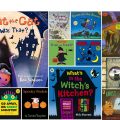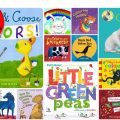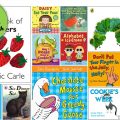Author: Jeanne Willis
Illustrator: Tony Ross
Publisher: Red Fox
Year: 2000
Language: English
Resource type: Children’s picture book
Themes: emotions, inclusion, diversity, daily life of children
Age range: 4–8 years
School levels: kindergarten (MS) to CE2 (Cycle 2 in France)
Main pedagogical goal: Work on expressing emotions and promoting diversity among children in English.
Summary of the Book
“Susan Laughs” portrays the life of a young girl named Susan through a rhythmic and poetic sequence of short phrases. Each spread illustrates one of Susan’s actions or emotional states: she laughs, she swims, she gets scared, she feels proud… Only at the end do we discover that Susan uses a wheelchair, which challenges the reader’s assumptions and reinforces a powerful message about representation and inclusion.
Culture and Vocabulary
- Culture: The story encourages students to rethink how disability is represented and perceived. Children will recognize familiar actions and feelings in Susan, helping normalize physical differences through shared experiences.
- Action verbs: laughs, sings, swings, swims, throws…
- Adjectives related to emotions and personality: shy, proud, angry, strong…
Grammar and Structures
- Simple subject-verb sentences: “Susan laughs”, “Susan sings” – great for repetition and acquisition.
- Opposites: good/bad, happy/sad, shy/loud, strong/weak – a great opportunity to introduce antonyms.
- Present simple, third person singular: an essential grammatical structure at this stage.
Phonology
- Rhythm and slight rhymes give the text a lyrical quality, helpful for memorization.
- Focus on phonemes: [s] (Susan, sings, swings), [g] (good, grins), [r] (rides, rows) – useful for discrimination and pronunciation practice.
Teaching Suggestions
Before Reading
- Brainstorm activities children do in their daily lives.
- Show illustrations without text to predict the story.
- Pre-teach key verbs and adjectives with gestures or flashcards.
During Reading
- Read expressively and ask students to repeat each line.
- Encourage students to mime the actions.
- Let them guess the next activity or feeling.
After Reading
- Reveal the final illustration and open a discussion: “Does this change how we see Susan?”
- Guided debate on inclusion and diversity.
Grammar Mini-lesson
- Focus on third person singular in the present simple.
- Use flashcards or images to create similar sentences with “He/She + verb”.
Cross-Curricular Connections
- Citizenship Education: Respect, empathy, inclusion.
- Art: Create a personal portrait in the style of the book: “I swim, I sing…”
- PE: Act out Susan’s actions in a physical warm-up game.
- Songs: “If You’re Happy and You Know It”, “Head, Shoulders, Knees and Toes” to reinforce vocabulary on emotions and body parts.
Project Idea: “Just Like Me” Class Book
Each student creates a double-page spread inspired by the book, using the same structure to describe themselves (e.g. “Liam jumps, Liam draws.”).
Bind the pages into a collective class book to celebrate both differences and commonalities.
Conclusion
“Susan Laughs” is a powerful tool in the ESL classroom: its simplicity makes it accessible, and its message fosters empathy and open-mindedness. Perfect for practicing everyday vocabulary and grammar structures, it also opens essential discussions about inclusion and what makes us unique – or just the same.





